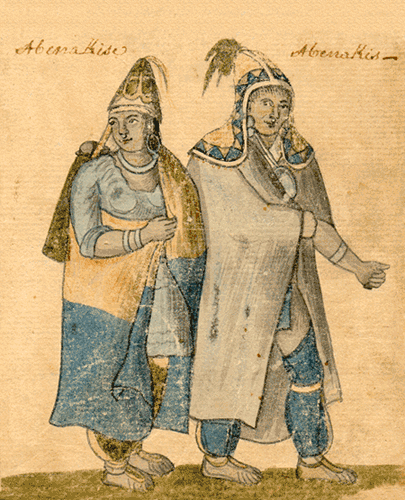 Evidence has been found of native people living in the area since the glaciers retreated. Arrowheads, stone axes, knives, and stone and clay pottery have been found along the banks of the rivers and streams entering the Bay. Six archaeological sites have been identified on Thompson’s Point alone (Boulanger, 2006). Flint outcroppings within the dolomite were an important resource for Native Americans who used it to make tools such as knifes and arrowheads. Their quarry sites are still visible. A Native American ceramic vessel was found in 1997 by two men sport diving off Thompson’s Point. It is a vessel with a pointed bottom 17.8 cm in diameter and 27.9 cm. in height. It was found on a ledge about 50 feet beneath the surface. It was dated by comparing it to other similar vessels of northeastern North America that had already been dated. It was built and decorated with simple stamped elements that were used about 2,000 years ago (Petersen, 1997). Archaeologists are puzzled about why the vessel was on the ledge and how it got there intact (Peterson, 1997). It is possible that this vessel is related to the story of a Chief who drowned there, when the canoe in which he was traveling, capsized in the rough waters (which are often encountered when rounding the Point). His spirit is believed to have ‘dwelt on the Point and controlled the winds and waves, and a safe journey could be assured by casting trinkets overboard – thus paying homage to the spirit of the Indian warrior’ (Beach, 1959).
Evidence has been found of native people living in the area since the glaciers retreated. Arrowheads, stone axes, knives, and stone and clay pottery have been found along the banks of the rivers and streams entering the Bay. Six archaeological sites have been identified on Thompson’s Point alone (Boulanger, 2006). Flint outcroppings within the dolomite were an important resource for Native Americans who used it to make tools such as knifes and arrowheads. Their quarry sites are still visible. A Native American ceramic vessel was found in 1997 by two men sport diving off Thompson’s Point. It is a vessel with a pointed bottom 17.8 cm in diameter and 27.9 cm. in height. It was found on a ledge about 50 feet beneath the surface. It was dated by comparing it to other similar vessels of northeastern North America that had already been dated. It was built and decorated with simple stamped elements that were used about 2,000 years ago (Petersen, 1997). Archaeologists are puzzled about why the vessel was on the ledge and how it got there intact (Peterson, 1997). It is possible that this vessel is related to the story of a Chief who drowned there, when the canoe in which he was traveling, capsized in the rough waters (which are often encountered when rounding the Point). His spirit is believed to have ‘dwelt on the Point and controlled the winds and waves, and a safe journey could be assured by casting trinkets overboard – thus paying homage to the spirit of the Indian warrior’ (Beach, 1959).
The indigenous people of the area when Europeans arrived were the Abenaki. The Abenaki lived in an area bounded by Lake Champlain in the west, the St. Lawrence Seaway in the north, and the Manchester – Portland part of the Atlantic Coast . The Western Abenaki lived in Vermont. The traditional fishing grounds of the Western Abenaki included the Town Farm Bay (Glenn & Teetor, 2005) and even after they were pushed north by the English invaders, to the village of Odanak, Quebec on the St. Francis River of the St. Lawrence Seaway, they continued to visit and fish from their traditional camp site at Little Otter Creek across the bay from Thompson’s Point well into the 20th century. They also sold their handicrafts such as baskets and miniature birchbark canoes to seasonal campers on Thompson’s Point (Glenn & Teetor, 2005). One family of the Obomsawins also lived on the Point until 1957, and are remembered in several memoirs (e.g. Brink, 1997; Gibbs, 1949)
Their language belongs to the Eastern Algonquian language group (Demarest, 1997). The Western Abenaki language dictionary was compiled by Gordon M. Day mostly at Odanak Village. One of his key informants was Simon Obomsawin who lived on the Point (Day, 1994). The Abenaki language is rich in words that described the area in which they lived. The Abenaki word for Lake Champlain is Bitawbagok (waters in between) and they believed it was the center of the universe (Demarest, 1997). The word for Thompson’s Point is Kwezowahomak.
Next | Sections 1 | 2 | 3 | 4 | 5 | 6 | 7 | 8 | 9 | 10 Appendicies 1 | 2 | 3 Home



